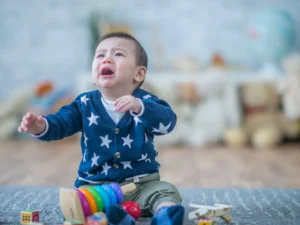Separation anxiety is a common and natural developmental stage that infants and toddlers go through. It typically begins around 6 to 8 months of age and can continue into the toddler years. During this period, children may become distressed when separated from their primary caregivers, leading to tears, clinginess, and reluctance to be apart. Coping with separation anxiety in young children requires understanding, patience, and supportive strategies. In this guide, we explore effective ways to help infants and toddlers cope with separation anxiety while fostering a sense of security and confidence.

Understanding Separation Anxiety:
- Normal Developmental Stage: Separation anxiety is a normal part of a child’s emotional development. It indicates the child’s growing awareness of their primary caregiver’s presence and importance in their life.
- Cognitive Awareness: As infants and toddlers develop object permanence, they begin to understand that people and objects exist even when they are out of sight. This awareness can trigger separation anxiety.
- Fear of Abandonment: Separation anxiety is rooted in the fear of being left alone or abandoned by their caregivers, which can cause distress and insecurity.
Effective Coping Strategies:
- Gradual Separations: Begin with short and gradual separations from your child, leaving them in the care of a trusted family member or caregiver for brief periods. Slowly increase the duration over time.
- Consistent Routines: Establish consistent daily routines to provide a sense of predictability and stability for your child. Knowing what to expect can help reduce anxiety.
- Transition Objects: Offer a comfort item, such as a favorite toy or blanket, that your child can hold onto during separations to provide comfort and familiarity.
- Say Goodbye: When leaving your child, say goodbye with a positive and reassuring tone. Avoid sneaking away, as it may heighten anxiety when they realize you’re gone.
- Foster Trust: Build trust with your child by being reliable and responsive to their needs. Consistent and loving caregiving can help strengthen the child-caregiver bond.
- Play Peek-a-Boo: Engage in peek-a-boo games to help your child understand that people can come and go but will return.
- Use Distractions: Offer engaging and fun activities when separating from your child to help distract them from any anxiety.
- Encourage Independence: Encourage your child’s independence in safe ways, such as letting them explore and play on their own while still within your sight.
- Acknowledge Feelings: Validate your child’s feelings and emotions by acknowledging their anxiety and offering reassurance.
- Be Patient and Understanding: Understand that separation anxiety is a temporary phase, and your child’s emotions are valid. Be patient and supportive as they navigate this developmental stage.
- Stay Calm: Children can pick up on their caregiver’s emotions. Stay calm and composed during separations to help them feel secure.
- Create a Familiar Environment: If possible, leave your child in a familiar environment with familiar caregivers to help ease the transition.
Remember that separation anxiety is a natural part of development and varies from child to child. It’s essential to approach it with empathy and understanding. As your child grows and gains confidence, separation anxiety will gradually lessen. By implementing supportive strategies and fostering a secure and loving environment, you can help your infant or toddler cope with separation anxiety and build a strong foundation of emotional well-being.






